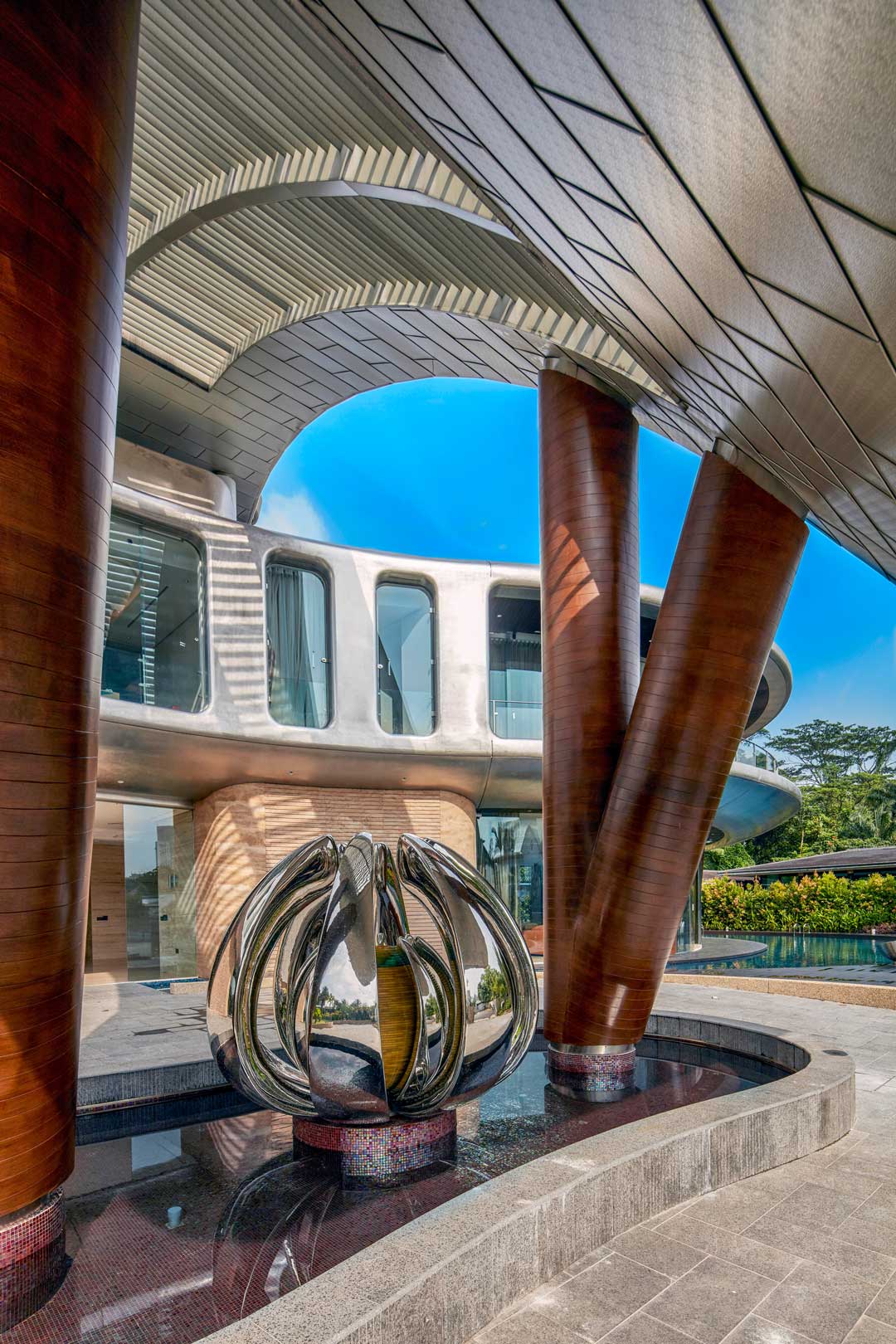VILLA OTTO
17 Jervois Hill Singapore
Singapore
Designed alongside the Alba Villas on Sentosa for the same client, Villa Otto, situated along the Jervois Hill area of Singapore, was originally conceived with a feng shui-driven form resembling a slightly offset number 11. However, Massimo Mercurio’s intervention midway through the design led to a reimagining of the plan as a curvaceous number eight. This new configuration features two interlocking circular pavilions, each with an internal atrium that emphasises the shape of the numeral and channels natural light into the building.
This dynamic plan is matched by an equally striking elevation. Like Villa Lambda, which was completed before Otto, the building evokes the appearance of a flying saucer. Its transparency, coupled with outward-thrusting walls and canopies, gives the house a sense of hovering, as if preparing to take off or land. Seen from above, this sensation is heightened by the way the pool encircles the building and transforms into a water feature, complemented by undulating paths and landscaping that mirror the thrust of a spacecraft’s exhaust.
The spacecraft imagery is reinforced by the sculptural stainless-steel cladding, inspired by METAKAOS’s work using seamless stainless steel. Originally intended to be titanium, the material was changed due to welding challenges, but the result is still striking: a massive sculptural form appearing as a seamless, floating piece of steel above the water. Instead, stainless steel has been used with only an expansion groove every 8 metres to allow for heat expansion.
Villa Otto clearly separates its public and private sections. The second storey contains the master and two junior bedrooms, two guest rooms, a prayer room, study, and game room, all set apart from the ground-level spaces. Entry can be through either the basement or main door, offering contrasting arrival experiences.
The basement houses an extensive carpark, from which visitors enter the basement lounge area down a broad travertine corridor, centred on Massimo’s Tai Chi, a three-dimensional sculptural interpretation of yin and yang. The basement’s cruciform plan additionally includes a karaoke room, a luxurious sauna and spa, and a bar, wine cellar, and home theatre.
The arrival experience on the upper level is vastly different, characterised by a curving driveway and a porte cochère formed by an arched canopy that extends down to the ground. This entryway leads visitors across a footbridge to the main entrance, inside of which is a circular sculpture, Vase Otto, creates an optical illusion: It is actually a 2-metre, semi-spherical bowl with a lamp hanging above it. However, the light streaming down from the lamp creates the illusion of a single piece of sculpture. It is an example of those pieces which Massimo describes as having an “artistic function” rather than being sculpture as such.
Otto’s ground floor features two main dining areas: a large, restaurant-like space to the left, and a more intimate dining room to the right, which opens onto the pool and barbecue area. These atrium spaces are floored with glass tiles, diffusing light into the basement. The smaller dining space centres around Infinity, a sculpture of intertwined infinity symbols, symbolising limitless fortune.
The interior spaces are generously proportioned. The master bedroom, for instance, occupies half a floorplate, around 500 square metres. While the external form is voluptuous, the interior spaces are more restrained, with curved walls framing the luxurious yet private atmosphere of the rooms.
Villa Otto stands as a prime example of MDL’s integrative design philosophy, where architecture, landscaping, and interior elements converge into a unified experience, creating a house that is more than just a residence—it is a singular, dynamic work of art.
LOCATION
19 Jervois Hill, Singapore 247724
CLIENT
Private Development
TYPE
Residential
SIZE
2,800 sqm
YEAR OF COMPLETION
2017





